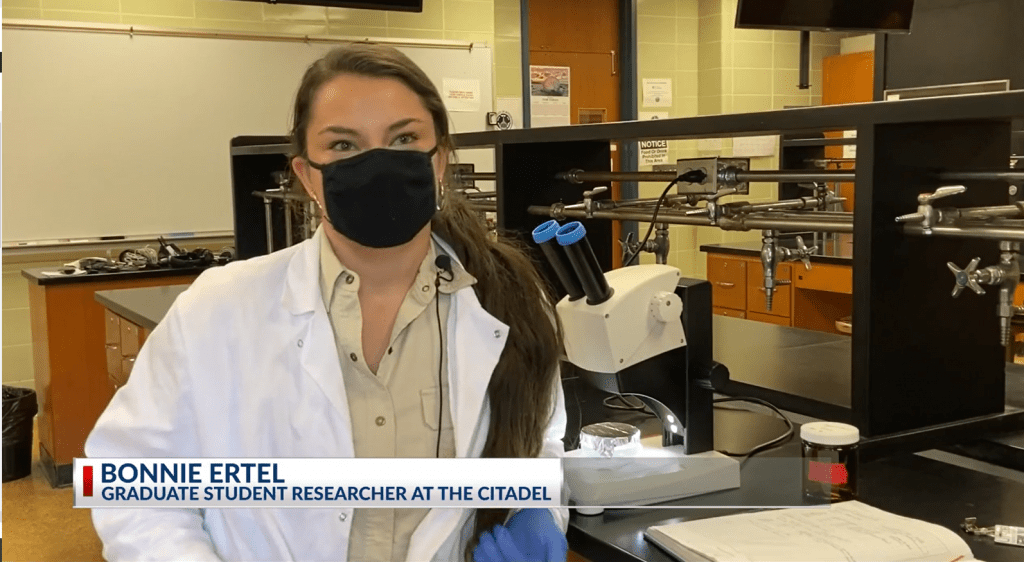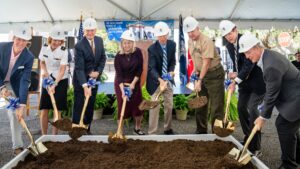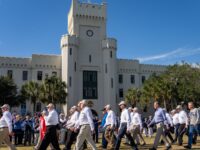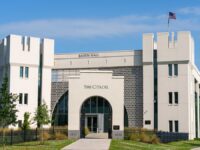
As seen on WCBD – Count on 2, by Megan James
Under a microscope is a dish of flood waters from Haygood street, and graduate researcher Bonnie Ertel is picking out microplastics.
“I’m looking for color, shape, and also texture.”
It’s all part of the joint research project of Dr. John Weinstein and Dr. Claudia Rocha, analyzing microplastics and bacteria that are found in our sunny day, coastal flood waters from high tides.
“Our hypothesis is that as the flood water covers the street, and then ebs down into the tidal creeks, that it could be a pathway for microplastics into the coastal waterways here in Charleston,” Bonnie Ertel, Graduate Student Researcher at The Citadel, said.
Microplastics, of course, can harm organisms living in these waterways. Harmful bacteria can as well, and it can also cause an array of health problems for people.
“DHEC looks for certain types of bacteria that indicate contamination by fecal matter,” Dr. Claudia Rocha, Professor of Biology, said.
That’s what you can see here in these petri dishes. There are fecal coliforms and enterococci, which harm both human and animal health.
“We find another bacteria that you don’t hear much about and that is vibrio,” Dr. Rocha said. “Vibrios can become a concern not just for the contamination of shellfish, but because it can cause infections.”
Understanding what microplastics and bacteria are found in our waterways is ever important as our climate continues to change.
“The seas are rising, and therefore we are seeing more flooding events here in the city of Charleston,” Dr. Rocha warned.
“It’s not gonna stop anytime soon,” Ertel said. “I think it’s important to understand the whole impact, the environmental impact, this flooding has before it’s too late…. Before it’s too late.”
At the Citadel, Meteorologist Megan James, Count on 2.

 Citadel President to retire, culminating a 50-year career in public service
Citadel President to retire, culminating a 50-year career in public service SoCon recognizes Annetta, Leonard as all-conference faculty and staff honorees
SoCon recognizes Annetta, Leonard as all-conference faculty and staff honorees Breaking ground for the upcoming Krause School of Leadership and Ethics
Breaking ground for the upcoming Krause School of Leadership and Ethics



